Vietnam, a country rich in history and culture, is not only famous for its modern cities but also hides rustic, peaceful beauty in its ancient villages. These villages are not just places that preserve the marks of time through unique architecture and distinctive customs, but also living cultural and historical treasures of the nation. A journey to explore ancient villages in Vietnam will take you back in time, feel the slow, peaceful pace of life, and admire the unique traditional architecture, where the Vietnamese soul remains intact.
From the North with its contemplative, mossy villages, to the Central and South with peaceful villages along rivers, each ancient village carries a unique beauty, a different historical and cultural story. Let’s explore the delicate beauty and profound cultural values of Vietnam’s ancient villages with “Du lịch khắp thế gian” (Travel the World), where time seems to stand still, leaving precious traditional values for future generations.
1. Duong Lam Ancient Village (Hanoi) – Timeless Charm in the Heart of the Capital
Located about 50km west of the center of Hanoi, Duong Lam ancient village in Son Tay town, Hanoi, is known as the “living museum” of the Northern Delta region. With a history of over a thousand years, Duong Lam is a rare village that still preserves almost entirely the structure and lifestyle of a traditional Northern Vietnamese village. Stepping into this place, visitors will be surprised by the peaceful, fresh space, completely different from the noise and bustle of the city.
Duong Lam captivates visitors with its winding village roads paved with red bricks, ancient mossy laterite walls, old lim wooden houses, and mossy tiled roofs that bear the mark of time. In Duong Lam, you will encounter familiar images of Vietnamese villages such as majestic village gates, ancient banyan trees casting shade, clear village wells, spacious communal houses, and ancient houses hundreds of years old. All blend together to create an ancient, peaceful, and poetic space.
To make your journey to explore Duong Lam more complete, visitors can combine it with visits to Son Tay Ancient Citadel, Va Temple, and Mang Son Temple, famous historical and cultural sites located near the ancient village.

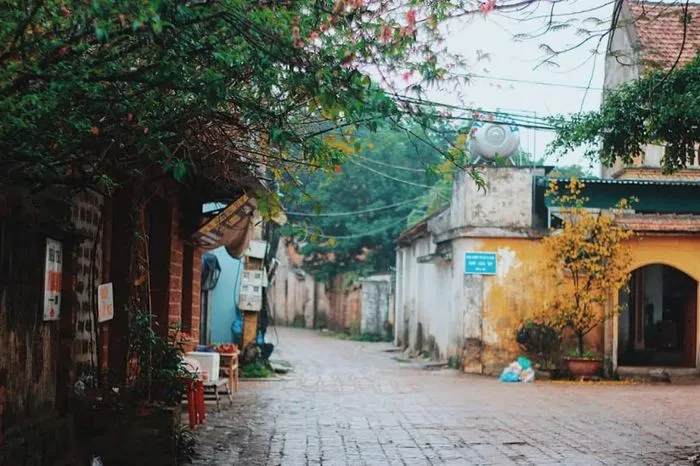
2. Uoc Le Village (Hanoi) – The Flavor of Gio Cha and Ancient Architecture
Uoc Le Village, located in Tan Uoc commune, Thanh Oai district, Hanoi, is not only famous for its renowned Gio Cha (Vietnamese sausage) making craft but is also an ancient village imbued with the marks of time. Coming to Uoc Le, visitors will not only enjoy the special delicious flavor of traditional Gio Cha but also admire the ancient, peaceful architecture of a Vietnamese village.
The first impression upon arriving at Uoc Le is the majestic village gate, built in the traditional arch style with sturdy red bricks and a curved roof in the shape of a unicorn. On the gate tower hangs the inscription “My Tuc Kha Phong” (Beautiful Customs Worthy of Praise) bestowed by King Tu Duc, a testament to the cultural beauty and good traditions of the village. Besides the village gate, the Uoc Le arched bridge is also a unique architectural highlight, spanning a wide ditch, leading into the heart of the village.
Unlike noisy tourist villages, Uoc Le still retains its peaceful, quiet, and rustic charm. Strolling through the village, visitors will feel the fresh, pleasant air and admire the ancient houses, small alleys, and old markets, all creating a nostalgic picture of an old Vietnamese village.
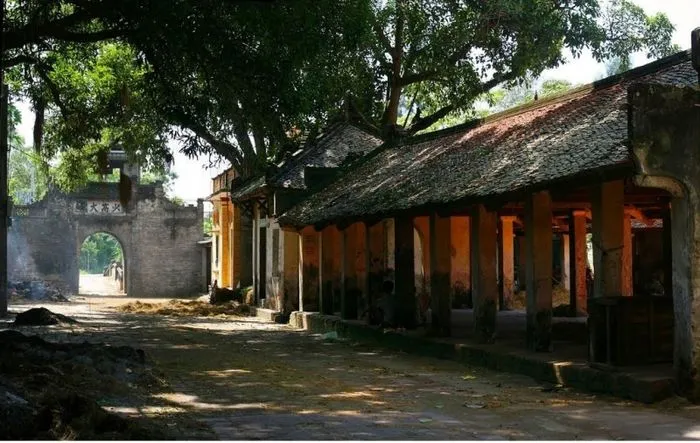
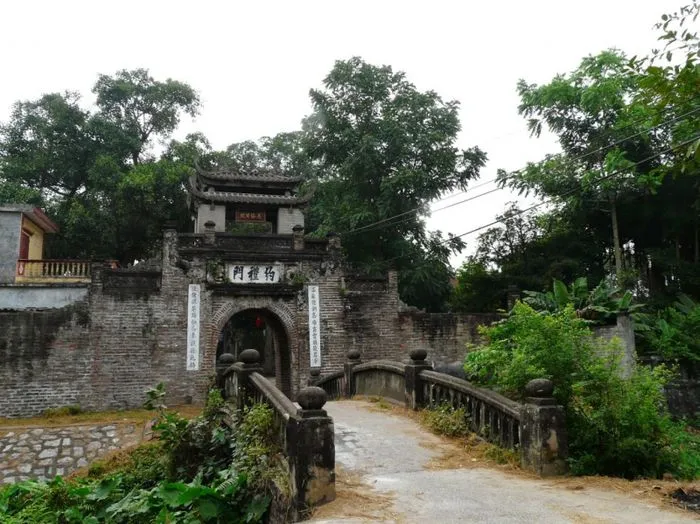
3. Tho Ha Village (Bac Giang) – Beauty by the Cau River
Located on the banks of the poetic Cau River, Tho Ha Village, belonging to Van Ha commune, Viet Yen district, Bac Giang province, is a precious gem of Northern Vietnamese traditional culture. Tho Ha village is famous for its ancient beauty, unique architecture, and traditional rice paper and rice noodle making craft. Coming to Tho Ha, visitors will immerse themselves in the peaceful, tranquil space of the village and discover its distinctive cultural and historical values.
Tho Ha prides itself on ancient architectural works from the 16th and 17th centuries such as Tho Ha communal house, Doan Minh Tu pagoda, Van Chi temple, village gate, village meeting house, etc. Tho Ha communal house is a majestic wooden architectural work with intricate carvings, a cultural symbol of the village. Doan Minh Tu pagoda is famous for its unique architecture and tranquil space. The ancient houses in Tho Ha are built with terracotta shards and pottery fragments, creating a distinctive architectural style that is unmistakable.
Although the traditional pottery craft has declined, the people of Tho Ha today mainly live by making rice paper and rice noodles. The image of rice paper racks drying along the village roads has become a characteristic of Tho Ha, creating a peaceful, tranquil, and poetic scene.
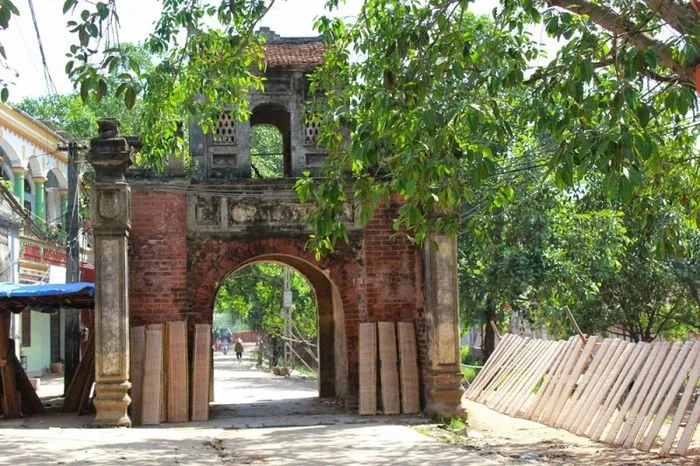
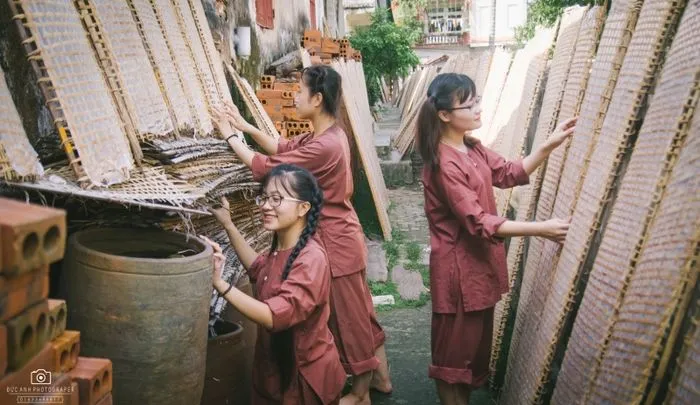
4. Ke Ve Village (Hanoi) – Traditional Beauty by the Red River
Ke Ve Village, also known as Dong Ngac village, located by the Red River, in Bac Tu Liem district, Hanoi, is one of the famous ancient villages of Hanoi. With its ancient beauty, unique architecture, and tradition of studiousness, Ke Ve village is an attractive destination for those who want to learn about the culture and history of ancient Thang Long land.
A special feature of Ke Ve village is its small alleys paved with diagonal bricks, creating an ancient, peaceful space. Ke Ve communal house, built in the 17th century, is where the village tutelary god is worshiped and many precious artifacts are preserved, such as stone steles and sets of lacquered wooden paintings from the Le dynasty. The village pagoda, built from the 18th-19th centuries, still retains a bronze bell cast from the 2nd year of Dien Huu reign and a stone stele dating from the Thinh Duc era.
Ke Ve village is also famous for its tradition of studiousness, being the hometown of many doctors and famous mandarins in Vietnamese history. Coming to Ke Ve, visitors can visit the ancestral temples of the Phan, Pham, Hoang, Do, and Nguyen families and admire the precious relics carefully preserved, proving the long-standing cultural and historical traditions of the village.
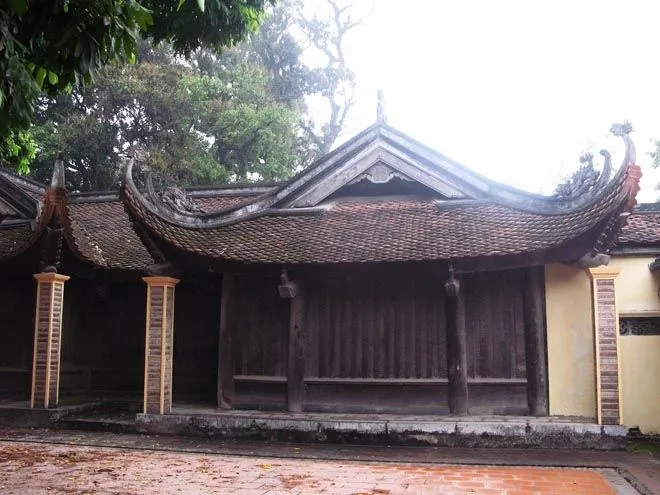

5. Cu Da Village (Hanoi) – Village of Entrepreneurs and Traditional Soy Sauce Craft
Cu Da Village, belonging to Cu Khe commune, Thanh Oai district, Hanoi, about 15km west of the city center, is famous as a “village of entrepreneurs” and for its traditional soy sauce making craft. Cu Da attracts visitors not only by its ancient architectural beauty but also by interesting stories about the economic development and entrepreneurial spirit of the local people.
From the early 19th century, Cu Da people began doing business in Hanoi and built spacious houses in the village. Uniquely, Cu Da is the first and only ancient village in Vietnam with a house numbering system, street and alley names like in the city, showing orderliness and discipline in village management and development. Cu Da’s architecture harmoniously combines traditional Northern Vietnamese architecture and French style, creating a unique and impressive beauty.
Besides architecture, Cu Da is also famous for its traditional soy sauce making craft. Cu Da soy sauce has become a famous brand, loved by many. Coming to Cu Da, visitors not only visit the ancient village but also have the opportunity to learn about the traditional soy sauce making process and enjoy the distinctive flavor of Cu Da soy sauce.


6. Nom Village (Hung Yen) – Pristine Beauty and Rural Market
Nom Village, located in Dai Dong commune, Van Lam district, Hung Yen province, about 20km from the center of Hanoi, is one of the rare ancient villages in the North that still retains its pristine, rustic beauty. Coming to Nom village, visitors will immerse themselves in a peaceful, quiet space and discover unique traditional cultural values.
The highlight of Nom village is Nom market, a rural market that still retains the traditional activities of an old Vietnamese village market. Nom market is not only a place to exchange goods but also a place for cultural exchange and meeting of people in the region. Nom pagoda is also a must-visit destination when coming to Nom village. Nom pagoda is famous for its unique architecture, imbued with Asian imprints, and a valuable collection of terracotta Buddha statues. Nom village stone bridge spanning the Nguyet Duc River is also a symbol of the village, with sophisticated architecture and ancient beauty.
Nom village is a vivid picture of an old Vietnamese village, where visitors can find peace, relaxation, and feel the pure Vietnamese soul.

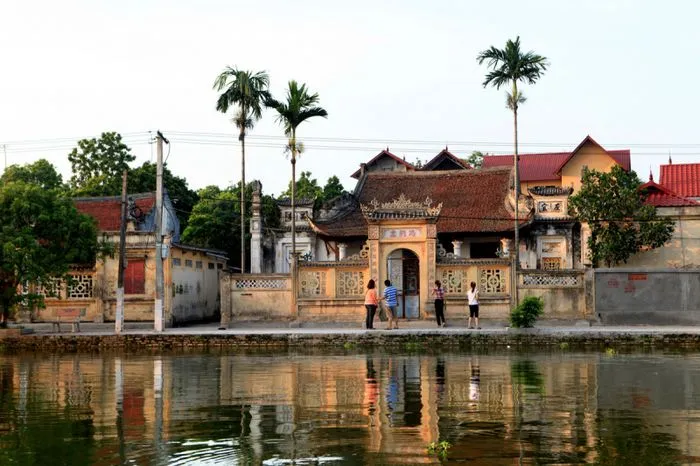
7. Cuu Village (Phu Xuyen) – French Architecture in the Heart of Rural Vietnam
Cuu Village, belonging to Van Tu commune, Phu Xuyen district, Hanoi, is a unique village with a harmonious combination of traditional Vietnamese architecture and French style. Cuu village is known for its ancient villas imbued with French architectural imprints, interspersed among traditional Vietnamese houses, creating a diverse and attractive cultural space.
The highlight of Cuu village is the village gate built 500 years ago, in the style of a Tam Quan gate but with two wide-open doors and an arched roof. The village gate is intricately decorated with images of unicorns, wine gourds, flowers, leaves, and Chinese characters, showing the intersection of Eastern and Western cultures. The village roads paved with smooth blue stone, ancient houses with tall, wide windows, and deep, winding alleys create an ancient, peaceful, and romantic beauty for Cuu village.
Coming to Cuu village, visitors will feel the fresh, quiet atmosphere and admire the unique architectural beauty, the delicate combination of tradition and modernity, between Vietnamese and French culture.

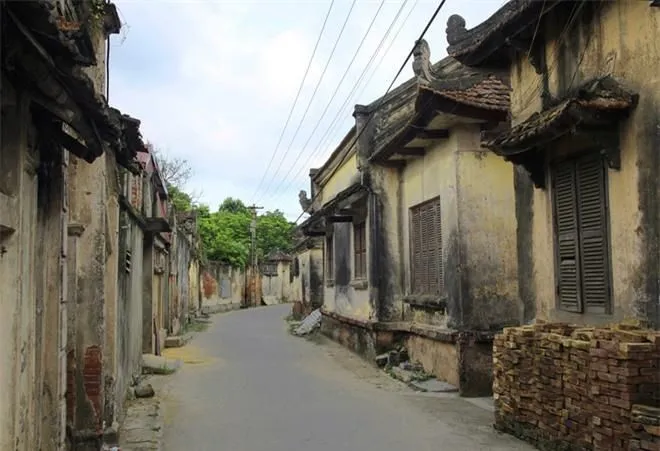
8. Tuy Loan Ancient Village (Da Nang) – Historical Imprints and 500-Year-Old Communal House
Tuy Loan Ancient Village, belonging to Phong Hoa commune, Hoa Vang district, Da Nang, is an ancient village with a history of over 500 years, deeply imbued with the culture and history of the Quang Nam – Da Nang region. Tuy Loan village is famous for its ancient communal house, unique architecture, and peaceful, tranquil space of a Vietnamese village.
Tuy Loan communal house is an ancient architectural work, built in the 15th century, where the village tutelary god is worshiped and traditional village festivals are held. Tuy Loan communal house preserves 20 decrees conferring titles on deities, the most recent dating from the reign of King Khai Dinh, a rare feature compared to other village communal houses. The large horizontal lacquered board in front of the communal house yard is made of unique ceramic art, with images of dragon-horses and unicorns, a remarkable work of art.
Coming to Tuy Loan village, visitors will immerse themselves in the peaceful, fresh space of the village, admire the ancient beauty of the communal house, and learn about the history and culture of this land.
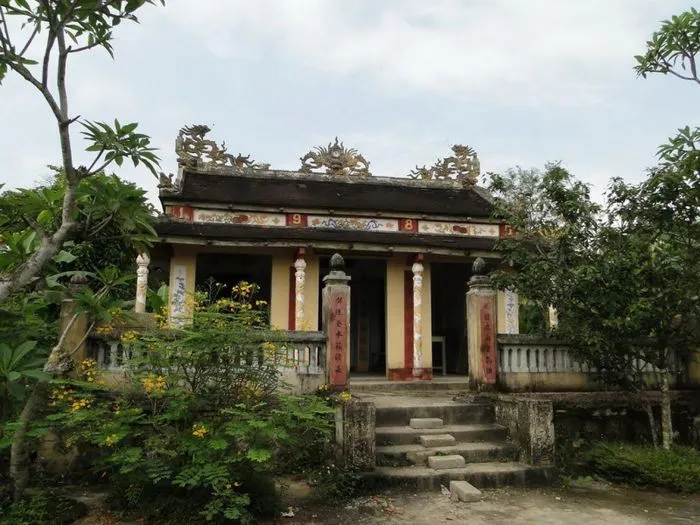
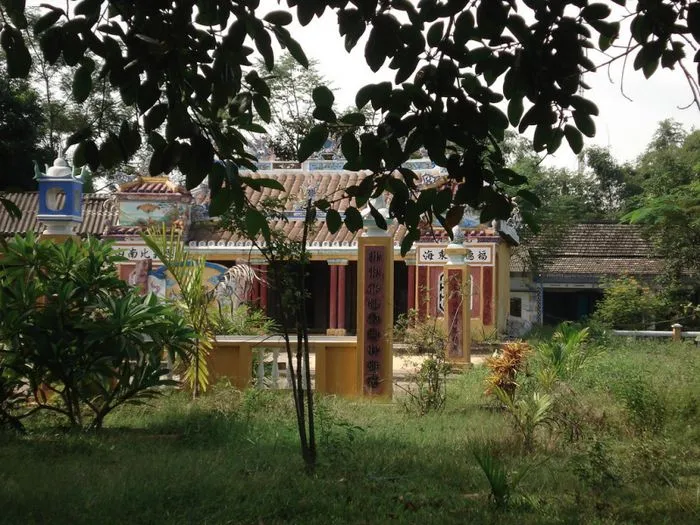
9. Bat Trang Pottery Village (Hanoi) – Where the Soul of Vietnamese Soil is Preserved
Bat Trang Pottery Village, belonging to Gia Lam district, Hanoi, is one of the most famous pottery villages in Vietnam. With a history of over 700 years, Bat Trang is not only a place that produces exquisite pottery products but also an attractive cultural tourist destination, attracting domestic and international visitors.
Coming to Bat Trang, visitors will visit Bat Trang communal house, where the village tutelary god is worshiped and traditional festivals are held, admire the ancient architecture, and learn about the history of the pottery village. Van Van ancient house is another unique destination in Bat Trang, displaying more than 400 ancient pottery items from the 15th to 19th centuries, a valuable private pottery museum. Visitors can also experience pottery making at pottery workshops in the village, creating their own unique pottery products.
Although Bat Trang has now become a bustling tourist craft village, it still retains the green, peaceful space of a Vietnamese village, where visitors can find relaxation and experience unique traditional cultural features.
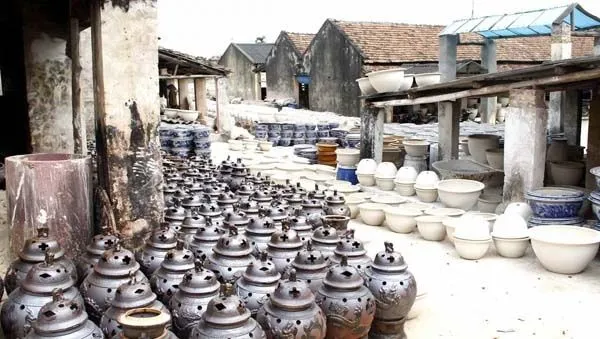

10. Long Tuyen Ancient Village (Can Tho) – Riverside Garden Beauty and Binh Thuy Ancient House
Long Tuyen Ancient Village, located by the gentle Binh Thuy River, in Can Tho, is an attractive tourist destination in the Mekong Delta. Long Tuyen village is famous for its riverside garden beauty, ancient houses, and unique cultural traditions of the Southern region.
Coming to Long Tuyen, visitors will admire the ancient houses located close together by Binh Thuy market, still retaining their ancient, unique beauty. In particular, Binh Thuy ancient house, belonging to the Duong family, built in 1870, is one of the most beautiful and famous ancient houses in the Mekong Delta. The house has classic French architecture, with a large space, luxurious interior, and green garden.
Long Tuyen village not only has ancient houses but also fruit-laden orchards, small winding canals, and green rice fields, creating a peaceful, poetic picture of a Mekong Delta village.
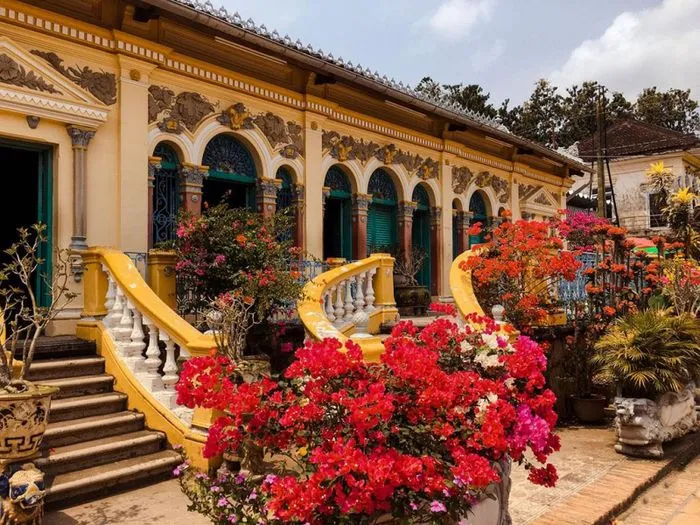
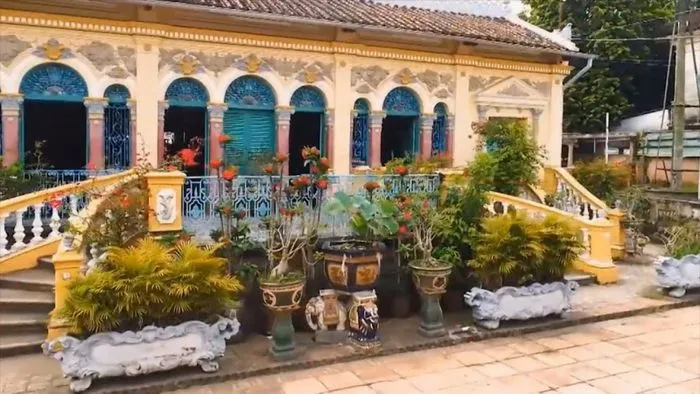
11. Phuoc Tich Ancient Village (Thua Thien Hue) – Living Museum by the O Lau River
Phuoc Tich Ancient Village, located by the O Lau River, in Thua Thien Hue province, is considered a living museum, preserving the cultural values of Vietnamese villages for hundreds of years. Phuoc Tich is famous for its ancient Ruong houses, unique architecture, and traditional pottery craft.
Coming to Phuoc Tich, visitors will be amazed by the ancient beauty of the Ruong houses, with more than 100 ancient houses, of which 37 are over 100 years old and 12 are especially over 150 – 200 years old. The Ruong houses in Phuoc Tich are intricately carved, showing the talent and skill of ancient artisans. The space of Phuoc Tich village is quiet, fresh, with small roads, green tree-lined alleys, green gardens, and ancient houses, creating a peaceful, poetic picture of an old Vietnamese village.
Visitors to Phuoc Tich also have the opportunity to learn about the traditional pottery craft of the village, admire unique pottery products, and experience pottery making at pottery workshops in the village.
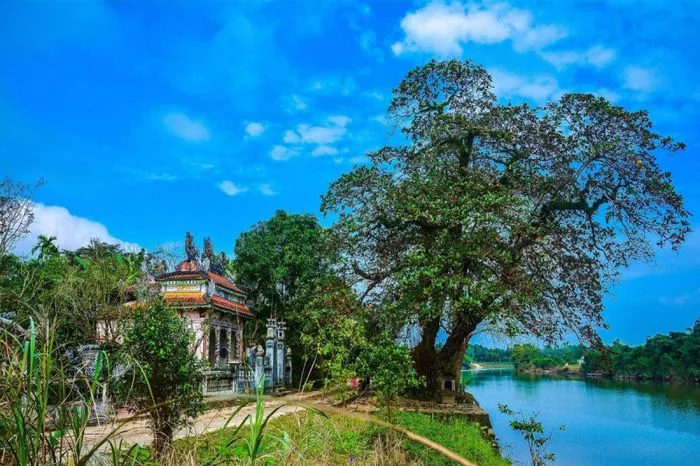
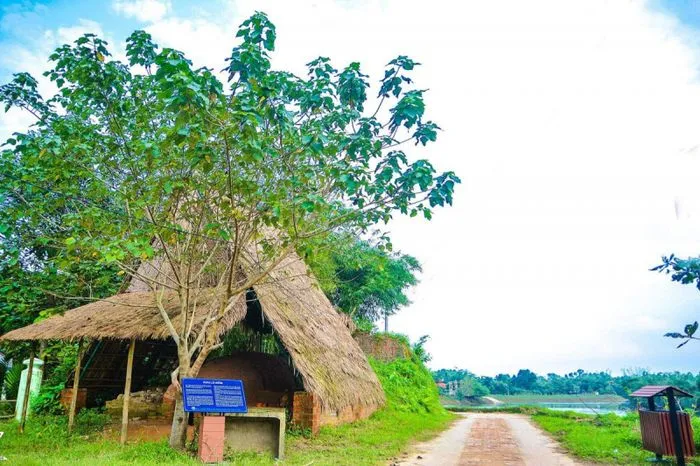
12. Phong Nam Ancient Village (Da Nang) – Peaceful Rural Beauty of Central Vietnam
Phong Nam Ancient Village, belonging to Hoa Vang district, Da Nang, is an ideal tourist destination for those who want to find the peaceful, rustic beauty of a Vietnamese village in Central Vietnam. Phong Nam still retains the traditional architecture of an ancient Vietnamese village, with ancient houses, bamboo-lined village roads, and vast rice fields.
Coming to Phong Nam, visitors will feel the fresh, quiet atmosphere and admire ancient architectural works such as communal houses, pagodas, temples, ancestral shrines, family temples, etc. Green bamboo rows, golden rice fields, and mossy ancient houses create a peaceful, poetic picture of a Vietnamese village.
Although influenced by urbanization, Phong Nam village still tries to preserve its traditional cultural identity, being an attractive destination for those who want to explore the beauty of Vietnamese villages.
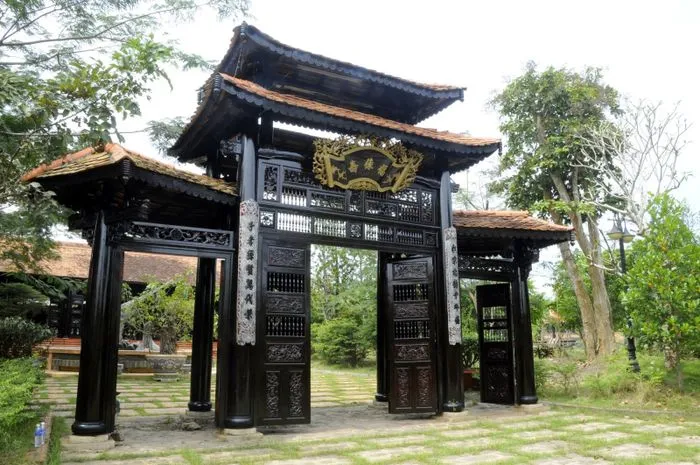

Ancient villages in Vietnam are not only attractive tourist destinations but also precious cultural heritages that need to be preserved and promoted. Each ancient village carries a unique beauty, a different historical and cultural story, but all contribute to creating a diverse and rich picture of Vietnamese culture. Take time to explore Vietnam’s ancient villages to feel the delicate beauty, profound cultural values, and rediscover the precious traditional values of the nation.